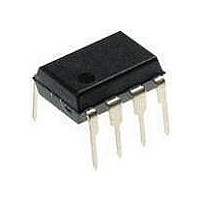TEA1520PN NXP Semiconductors, TEA1520PN Datasheet - Page 15

TEA1520PN
Manufacturer Part Number
TEA1520PN
Description
Switching Converters, Regulators & Controllers POWERPLUG
Manufacturer
NXP Semiconductors
Datasheet
1.TEA1521PN2112.pdf
(20 pages)
Specifications of TEA1520PN
Mounting Style
SMD/SMT
Package / Case
SOT-97
Lead Free Status / Rohs Status
Lead free / RoHS Compliant
Other names
TEA1520P/N2,112
Philips Semiconductors
15. Handling information
16. Soldering
TEA152X_FAM_2
Product data sheet
16.2.1 Soldering by dipping or by solder wave
16.2.2 Manual soldering
16.3.1 Reflow soldering
16.1 Introduction
16.2 Through-hole mount packages
16.3 Surface mount packages
Inputs and outputs are protected against electrostatic discharge in normal handling.
However, to be completely safe you must take normal precautions appropriate to handling
integrated circuits.
This text gives a very brief insight to a complex technology. A more in-depth account of
soldering ICs can be found in our Data Handbook IC26; Integrated Circuit Packages
(document order number 9398 652 90011).
There is no soldering method that is ideal for all IC packages. Wave soldering is often
preferred when through-hole and surface mount components are mixed on one
printed-circuit board. Wave soldering can still be used for certain surface mount ICs, but it
is not suitable for fine pitch SMDs. In these situations reflow soldering is recommended.
Driven by legislation and environmental forces the worldwide use of lead-free solder
pastes is increasing.
Typical dwell time of the leads in the wave ranges from 3 seconds to 4 seconds at 250 C
or 265 C, depending on solder material applied, SnPb or Pb-free respectively.
The total contact time of successive solder waves must not exceed 5 seconds.
The device may be mounted up to the seating plane, but the temperature of the plastic
body must not exceed the specified maximum storage temperature (T
printed-circuit board has been pre-heated, forced cooling may be necessary immediately
after soldering to keep the temperature within the permissible limit.
Apply the soldering iron (24 V or less) to the lead(s) of the package, either below the
seating plane or not more than 2 mm above it. If the temperature of the soldering iron bit is
less than 300 C it may remain in contact for up to 10 seconds. If the bit temperature is
between 300 C and 400 C, contact may be up to 5 seconds.
Reflow soldering requires solder paste (a suspension of fine solder particles, flux and
binding agent) to be applied to the printed-circuit board by screen printing, stencilling or
pressure-syringe dispensing before package placement.
Rev. 02 — 25 January 2006
SMPS ICs for low-power systems
TEA152x family
© Koninklijke Philips Electronics N.V. 2006. All rights reserved.
stg(max)
). If the
15 of 20















